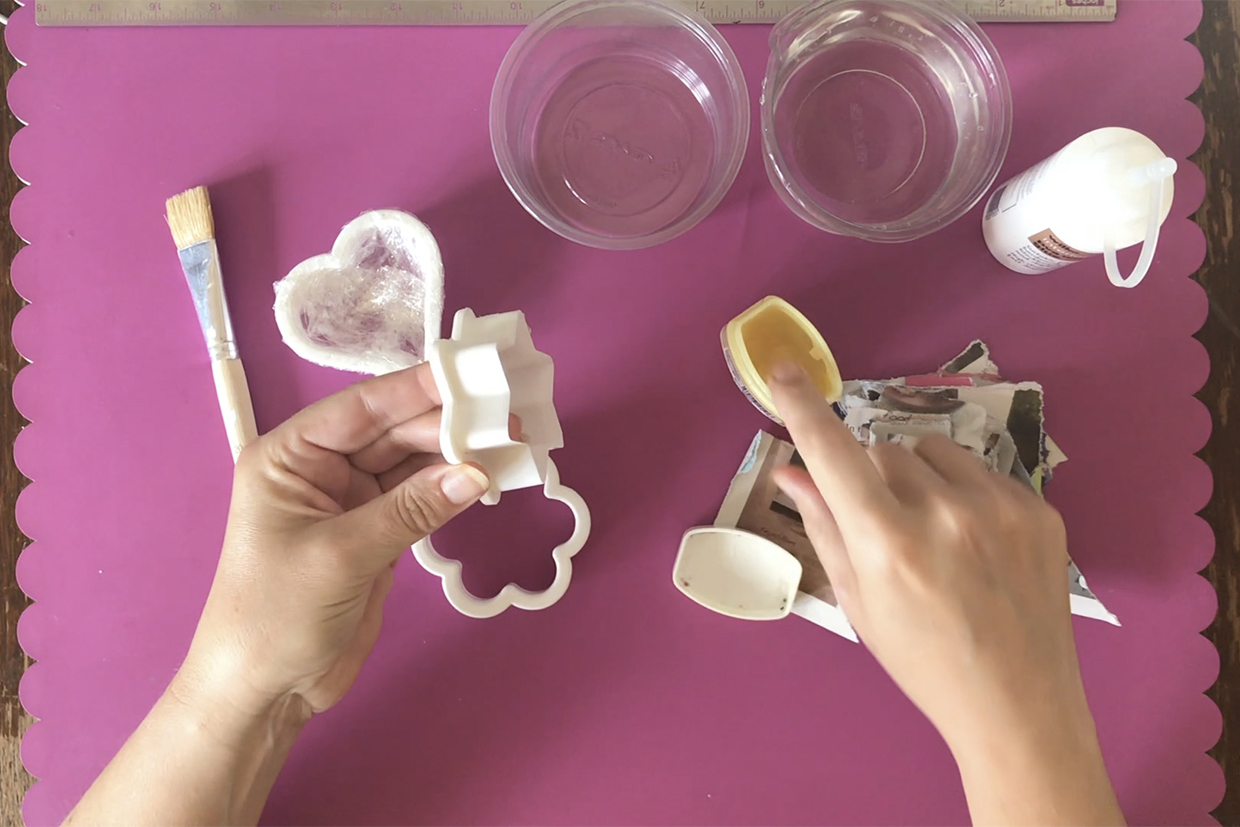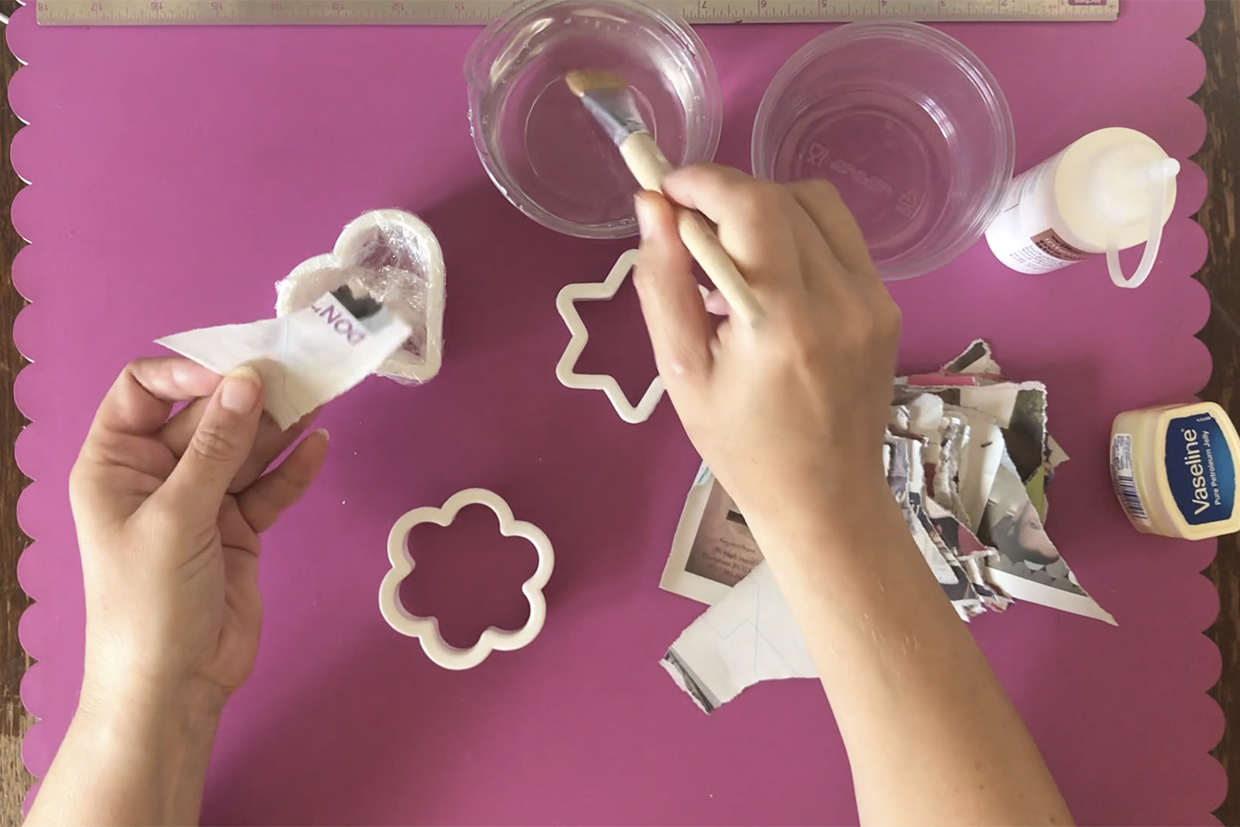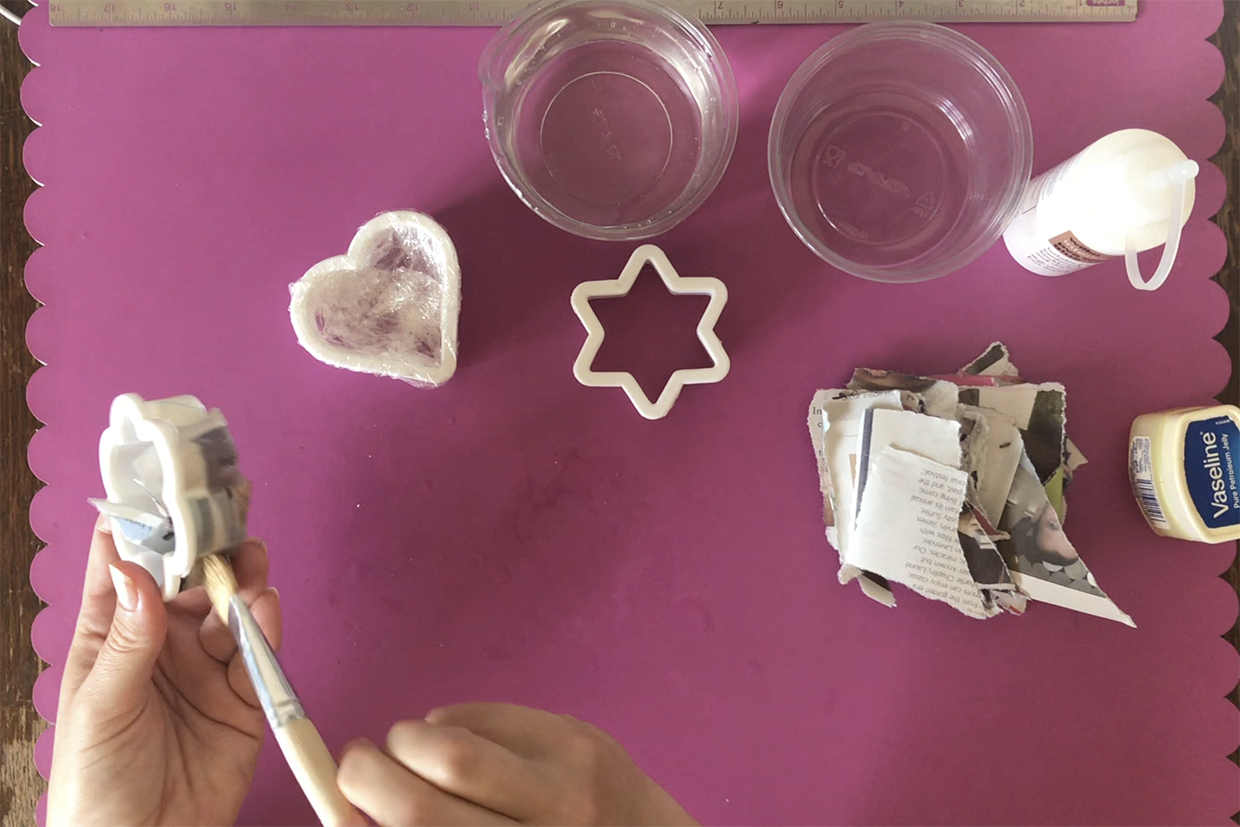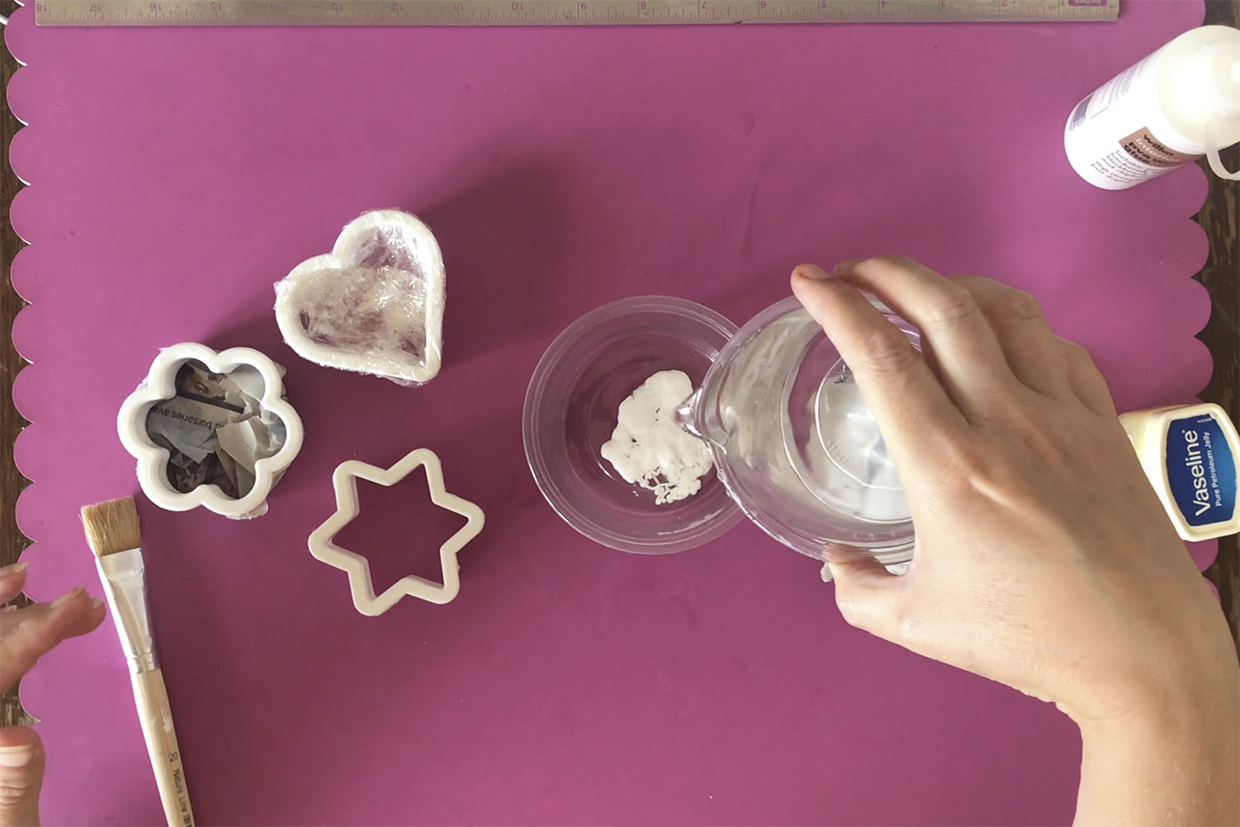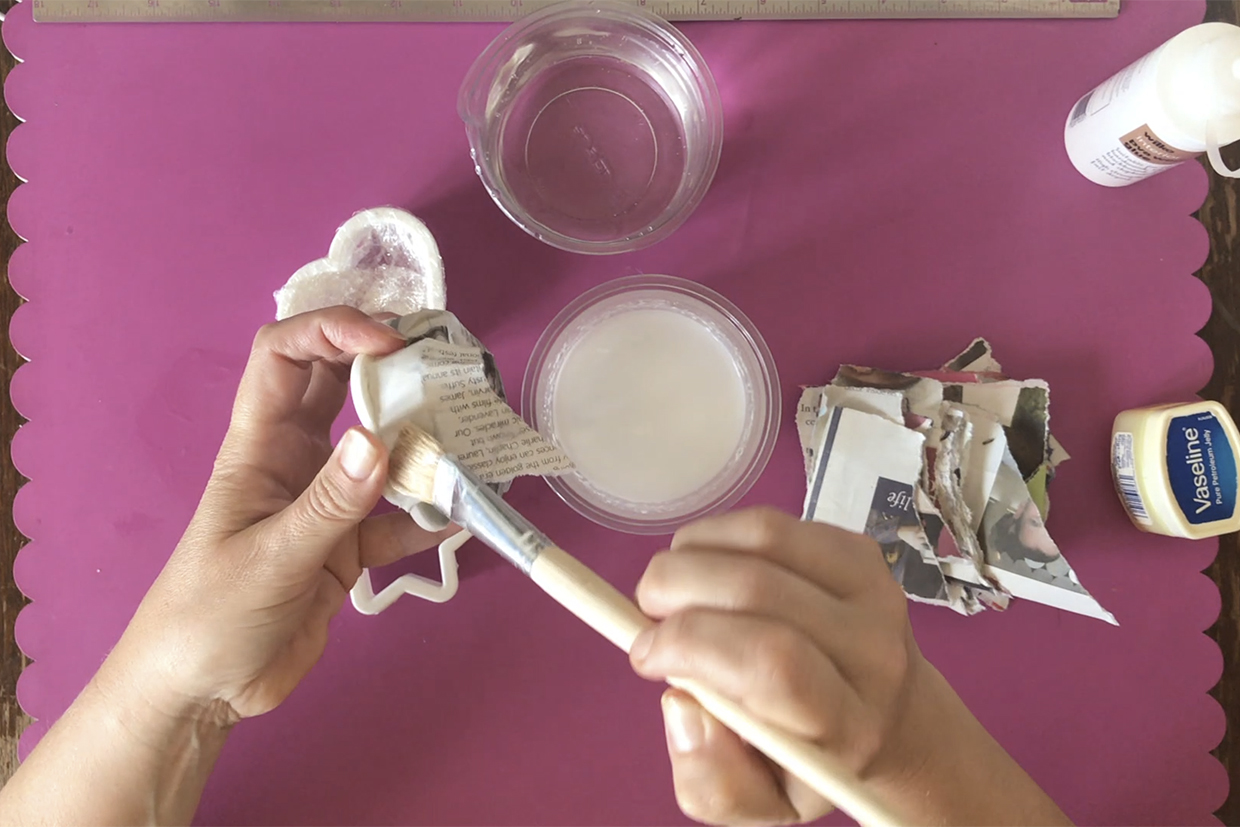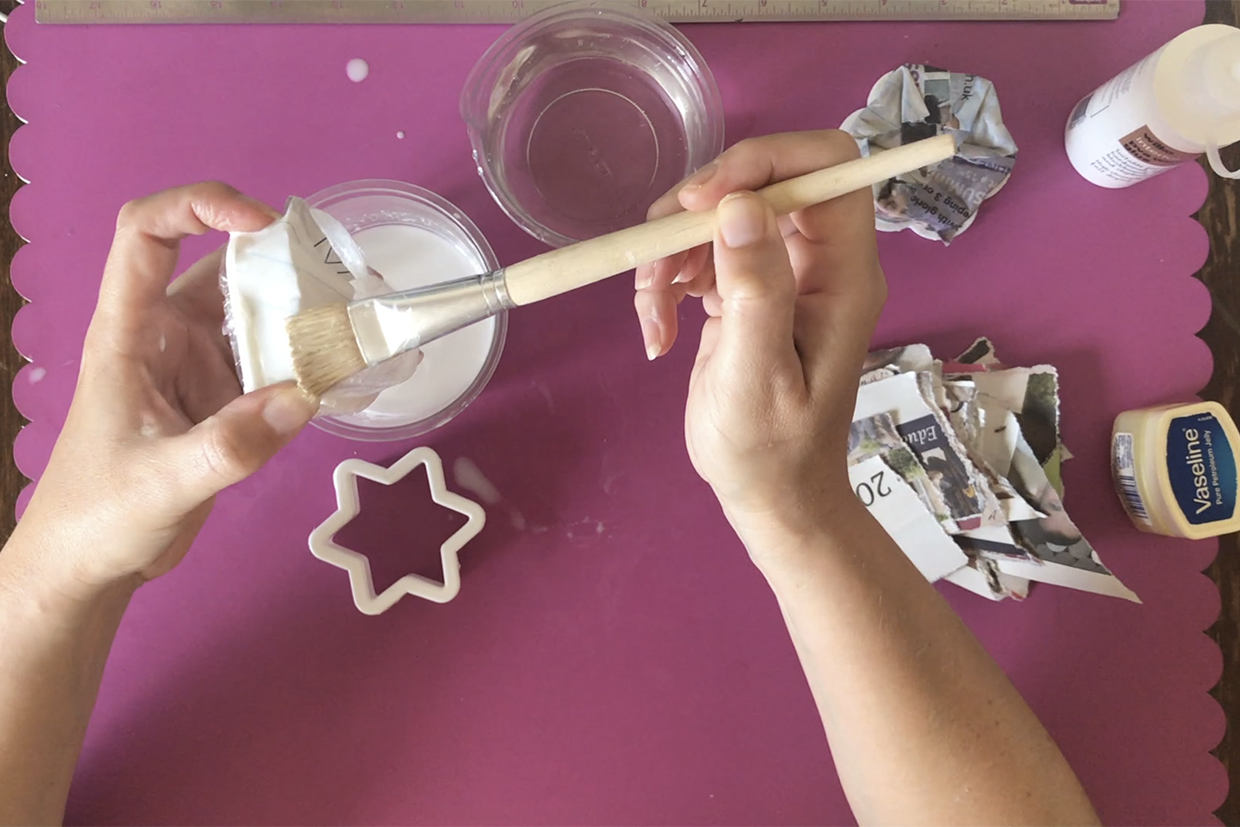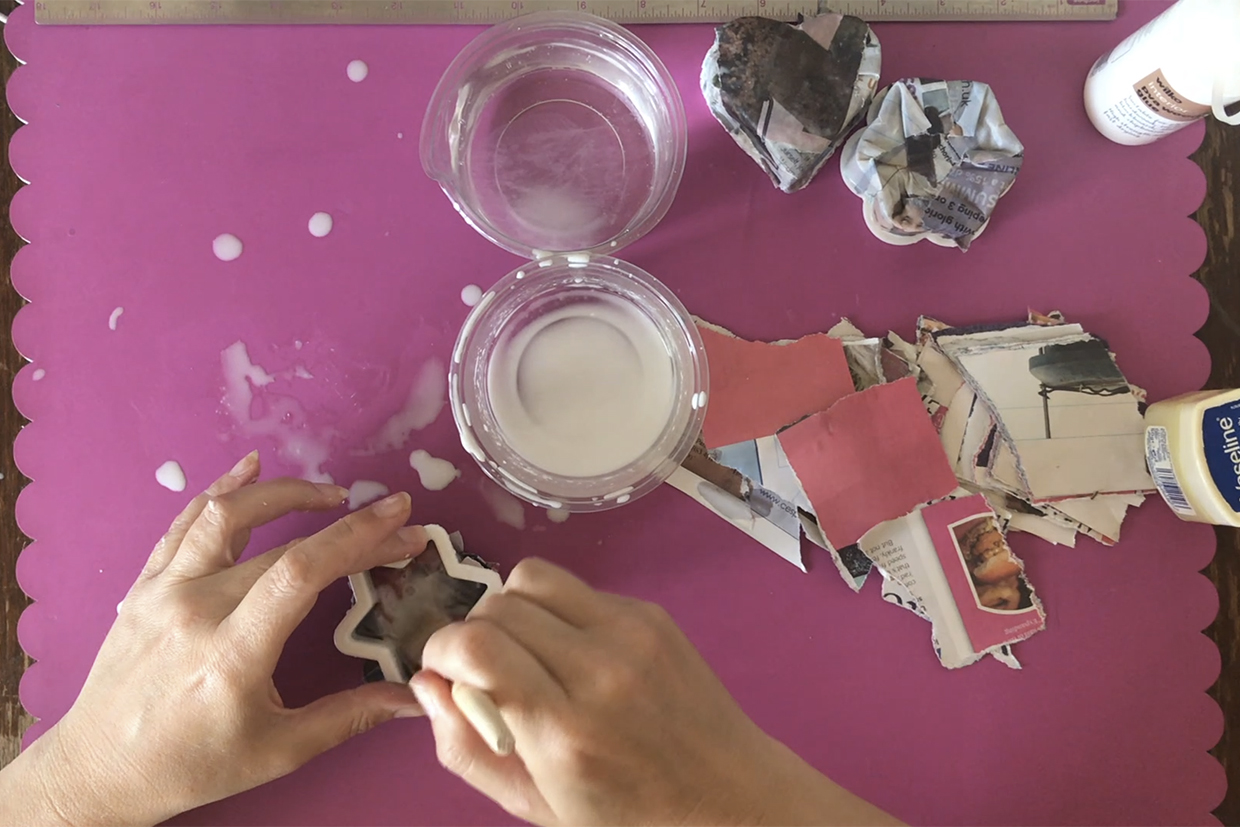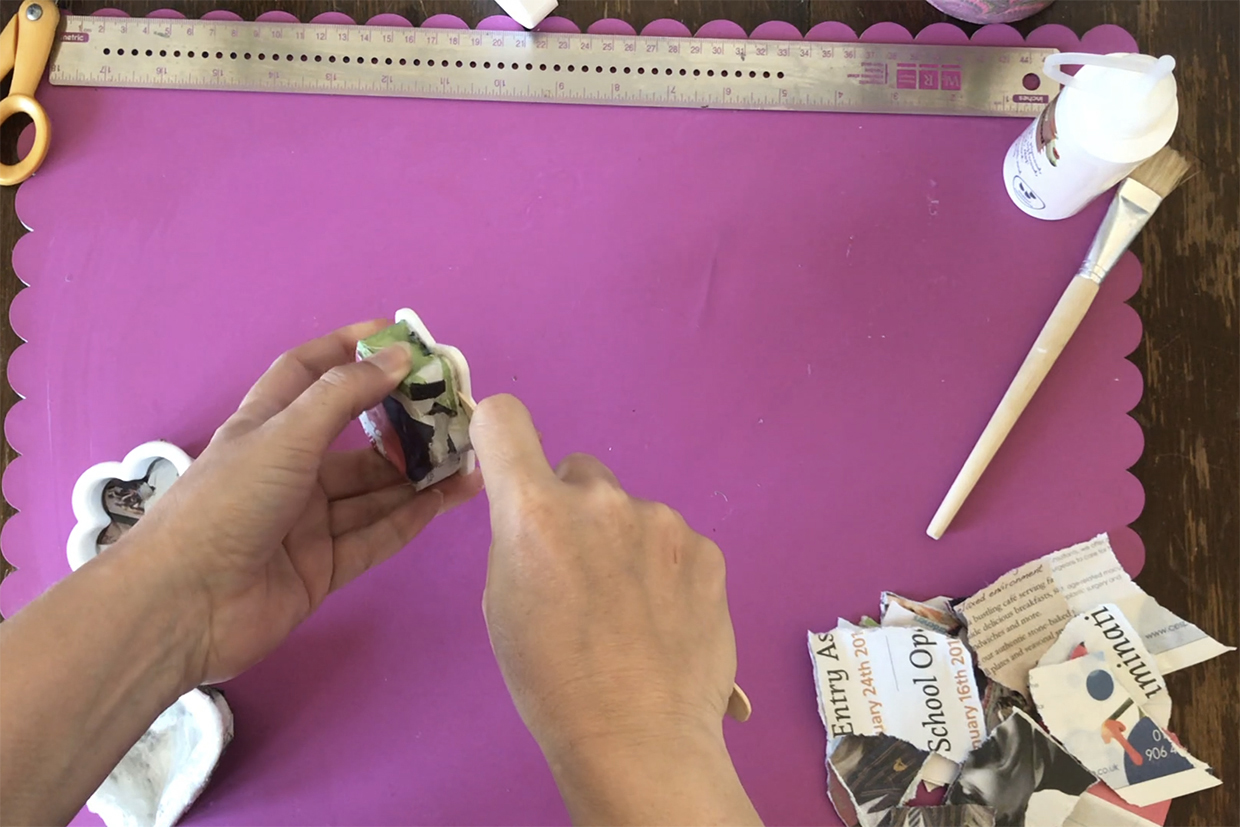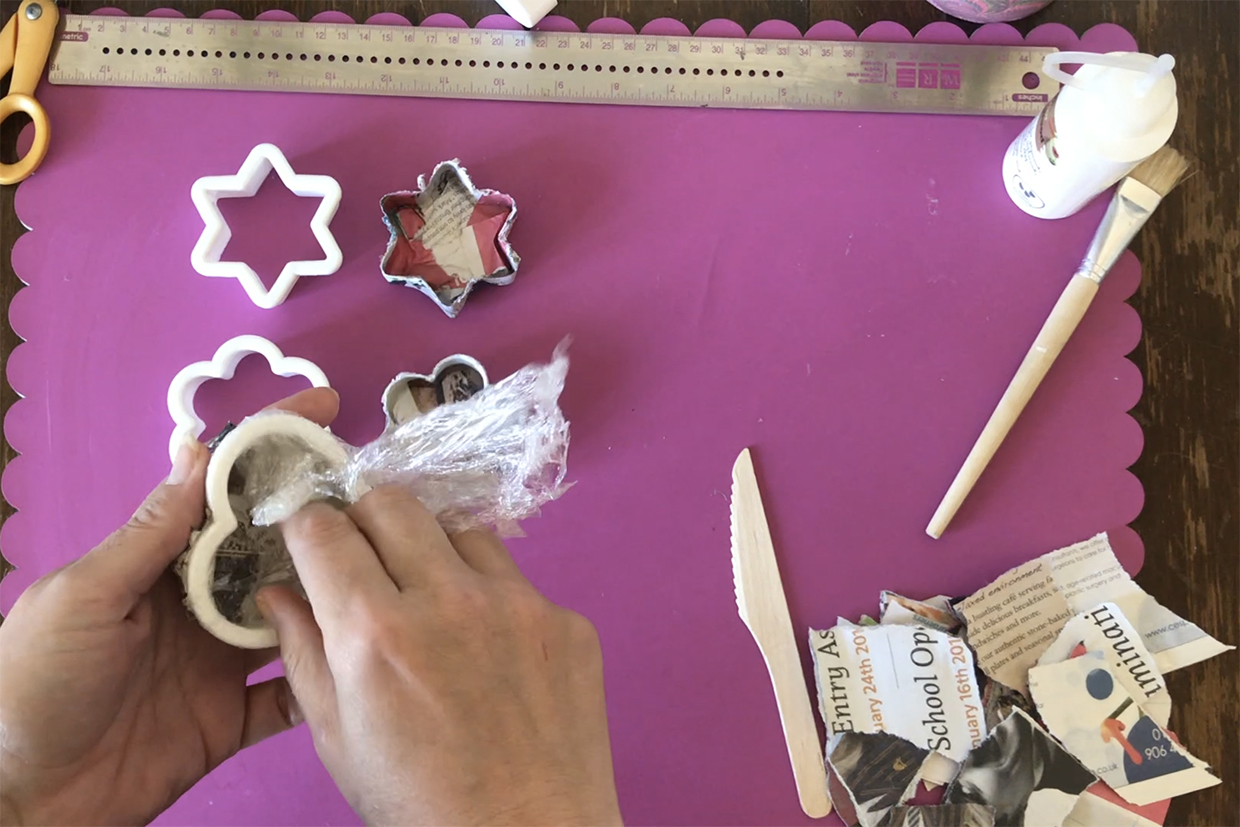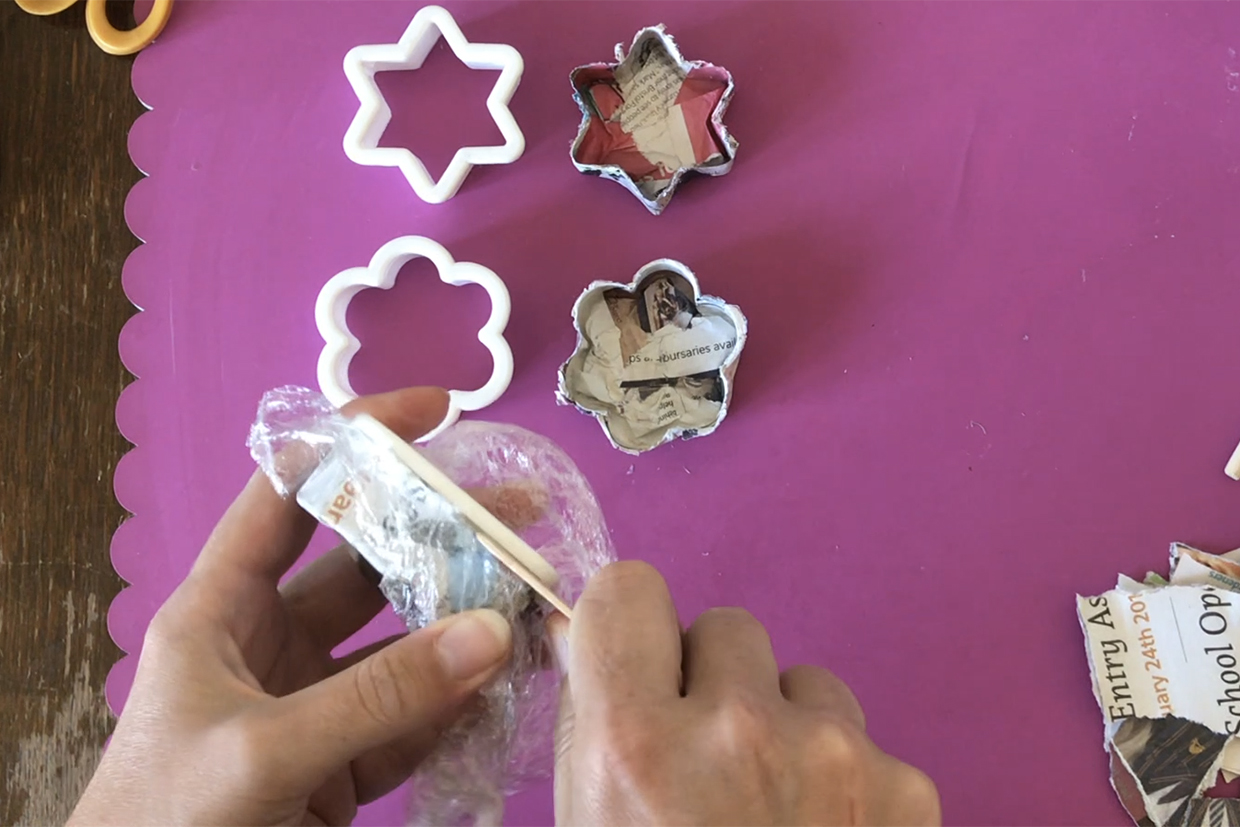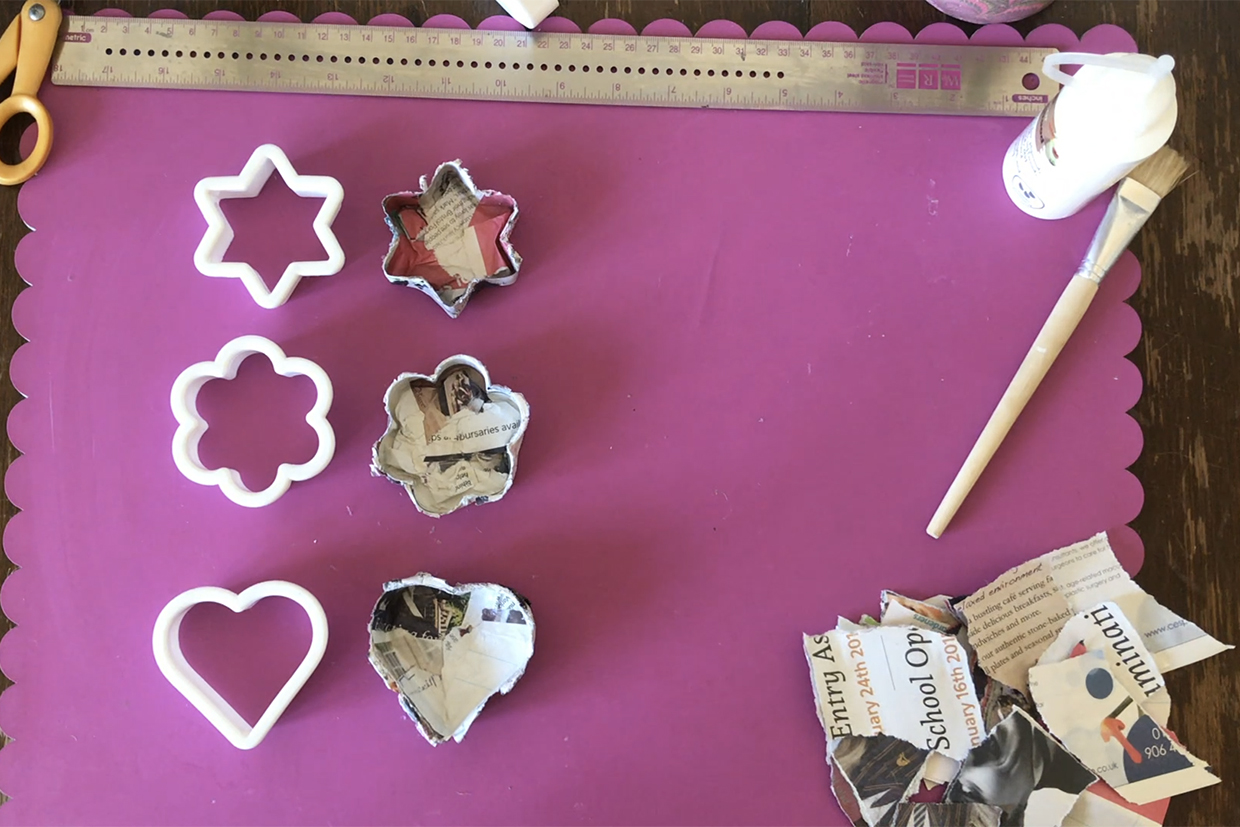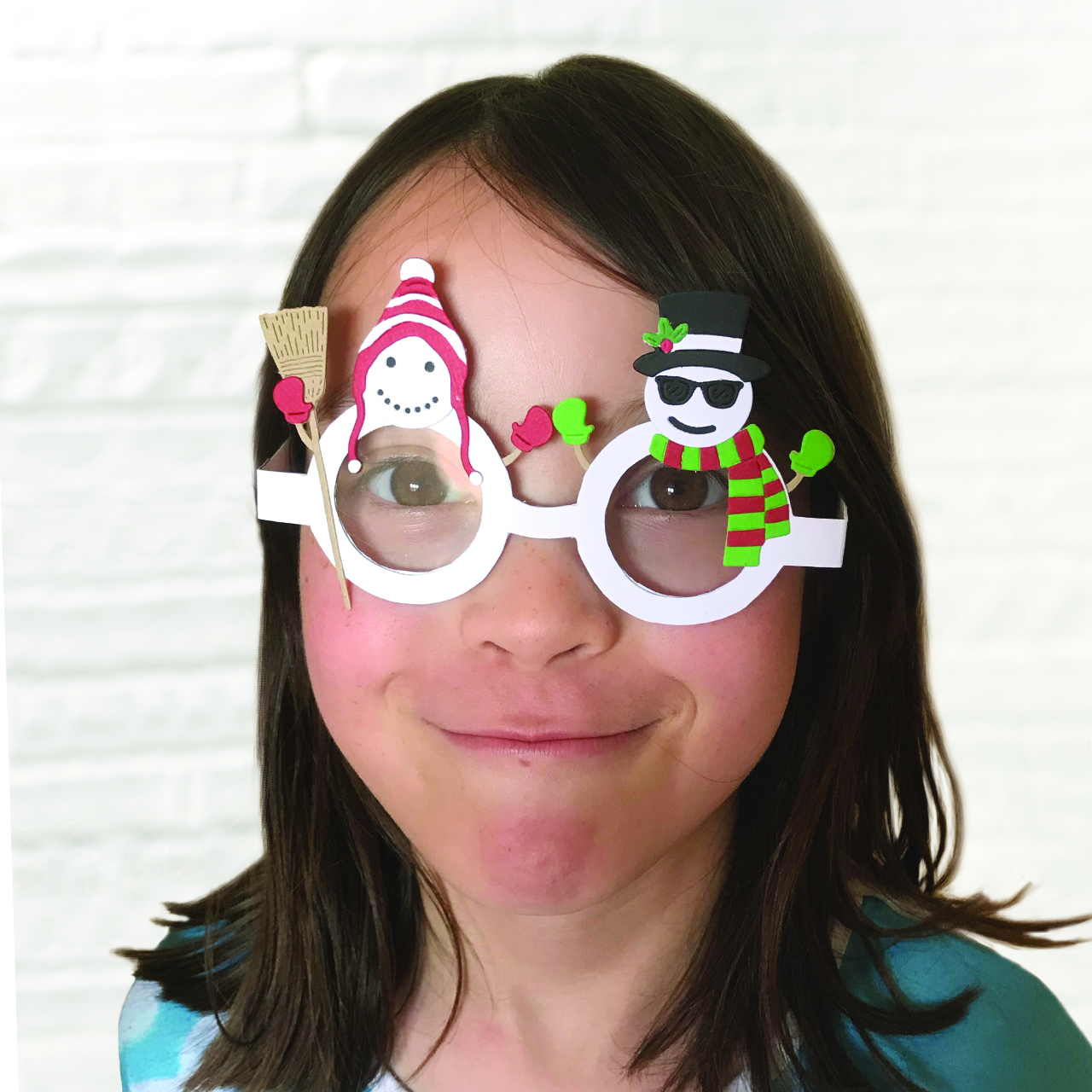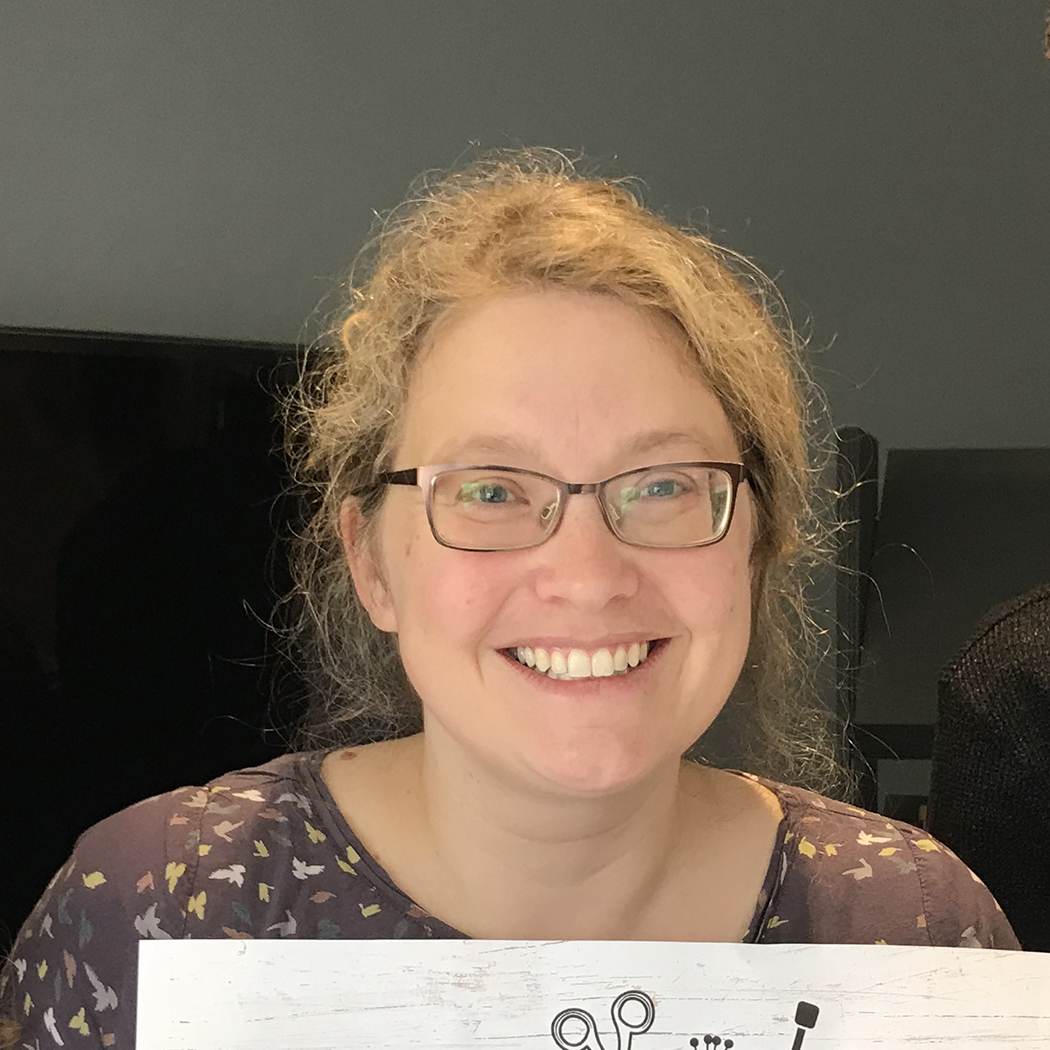How to make paper mache with PVA glue
It isn't just balloons that are good for covering in paper mache! You can cover so many different shaped objects with this fun paper mache recipe.
The reason that balloons are so popular is that they can be removed with just once prick of a pin, and POP – your paper mache balloon shape is free!
We're going to show you three great methods you can use to release your paper mache from solid objects, so you can see how to make paper mache fun shaped objects.
We're using cookie cutters to build up some little mini trinket pots, but you can use anything you like. Just remember you'll need to be able to slide you paper mache off it, so one side must be left open, with an opening wide enough for the object to be removed.
What is paper mache?
Paper mache (or papier-mâché to give it its proper name) literally means chewed paper. With this technique, absorbent paper (often newspaper) is torn into strips and mixed with a sticky paste.
The strips are applied to an object and take on the shape of that object once the paste is dry. You can use different papers, like tissue paper, but you don't want anything with a surface finish on it. If it looks glossy, it probably wont take up the paste too well, so it wont properly mash together.
Tearing the paper into strips rather than cutting it also helps to create a more absorbent edge for taking up with stitch paste and really sticking nicely.
Paper mache recipe
There are several methods you can use to make the paste for your paper mache. You can mix water with flour, use wallpaper paste, or use PVA glue mixed with water.
We are focusing on how to make paper mache with PVA glue in this article, but if you want to find out how to make paper mache with flour, check out BBC Good Food's step-by-step tutorial.

Try our salt dough recipe
Looking for more craft activities that kids will love? Let them make their own DIY decorations with our easy salt dough recipe.
What do you need to make paper mache?
- Newspaper torn into strips – 2x5cm is a good size
- PVA craft glue
- Cold water
- Paintbrush - 1cm wide is a good size
How to make paper mache
- Mix 1 part PVA craft glue with 2 parts water to make your paper mache paste.
- You don't need to be super accurate, so there is no need to measure out your ingredients – it is fine to approximate this by eye. However, a ratio of 2 parts water to 1 part PVA glue is a good rule of thumb.
- If you are making paper mache with kids, it's a good idea to use a child-friendly PVA craft glue, as this will be water soluble and can be easily removed from clothing and hands. However, we have used a water resistant wood PVA glue with this technique and it has still worked.
- Mix the glue and water together until they are combined. Your paper mache paste is now ready to use.
How to make paper mache
Take a look at our video tutorial to see how to paper mache and build up the layers of paper.
We have also included photos breaking down the steps for how to make paper mache below the video.


